- Home
- Orhan Pamuk
The Innocence of Memories Page 4
The Innocence of Memories Read online
Page 4
On September 12th, 1980, there was another military coup.
KENAN EVREN: Certain groups have been stirring up anarchy and chaos in our country, threatening our national security and plotting a course for our nation any true patriot must abhor. I assure you that these despicable traitors will have to face the Turkish Armed Forces, and will be made to account to the Turkish people for their actions.
KEMAL: Four months after the coup we were on our way home from the Keskins’ one night when, fifteen minutes before curfew, Çetin and I were stopped by soldiers checking people’s identity cards.
By instinct, or by force of habit, I’d picked up the grater at the Keskins’ when no-one was looking, and I’d left it sitting on the seat beside me. The grater sparkled for a moment in the glare of the bright lights of the cars waiting behind us, before I saw it disappear inside the small army truck just ahead of us. One of the soldiers came back and handed us our identity cards.
‘It’s all settled. You can go,’ he said.
The soldier cleared the way for us. But I stepped out of the car and went over to the army truck.
‘Sir, I think you still have my quince grater …’
‘You can’t keep this on your person, sir, it could be used as a weapon and cause serious injury,’ said another soldier, one of higher rank. ‘But fine, take it, just be sure you don’t bring it out with you again.’
They didn’t say anything more. I’d suffered a little heartbreak, but I was glad to be reunited with the grater. I realised I was happy. These dark, empty streets that now belonged to Istanbul’s dog packs, these avenues so ugly by daylight, hemmed in by concrete apartment buildings in such dreadful condition that it sapped my will just to look at them – now they looked alluringly mysterious, like poems.
AYLA: Strange times. Füsun and Feridun’s marriage fell slowly and surely apart, but, over eight obsessive years, and more than 1,500 visits to Füsun’s family home, through the death of his own father and a military coup, Kemal remained constant, and gradually Füsun let him back into her heart. And I remember one day Füsun casually mentioning that Cousin Kemal was giving her driving lessons. There was no better way for a young woman to be modern and independent than to know how to drive.
KEMAL: In April 1983, Füsun and I began to prepare for the drivers’ licensing examination, our first tentative plans having been followed by five weeks of indecision, feigned reluctance, and silence. We both knew there would be more at stake than a licence since the intimacy between us was to be put to the test, once again in a tutelary setting.
AYLA: Füsun was very particular about the dress she wore to her driving lessons with Kemal. It was just a cheap dress we found in Beyoğlu one Saturday afternoon, but Füsun and her mother had cheerfully embellished it with Ottoman-style fastenings, and together they’d transformed it into something quite unique. Füsun used to tell me how the dress would get soaked through with her sweat during those classes. The lessons may not have taught her much about driving, but she had begun to feel that Kemal’s love for her was no longer the claim of an arrogant young man, but the love of a gentler, humbler spirit. I think it must have been during those lessons that they decided to get married. And soon, Füsun began to regard Kemal’s 1956 Chevrolet as her own. And then, just like in one of those old films, after years of patient waiting, everything happened so quickly.
I read that Aunt Nesibe visited Kemal and told him that Füsun and Feridun were separating, and that Füsun wanted to meet with Kemal at the İnci Patisserie in Beyoğlu, and that the thirty-nine-year-old Kemal went to the rendezvous in Beyoğlu as happy and excited as a teenager going to see the lycée girl he had been dreaming about for months. And I read that, as Füsun took out a cigarette, Kemal leaned forward with his lighter, looking into her eyes, and, in a whisper, told her once again how much he loved her, how their bad days were over, and how, despite all the time they’d lost, a great happiness awaited them.
‘I feel the same,’ she said. ‘We’ll have a big, beautiful wedding at the Hilton, like everyone else.’ She frowned gravely. ‘Everything will be as it should be, down to the last detail.’
‘That is how I want it, too,’ Kemal said.
‘There’s one more thing I want. I want us all to tour Europe together, in your car. My mother will come to Paris with me. We can go to the museums, look at all the pictures. Before we marry, I also want to buy things there that I can take to our house as my trousseau.’
KEMAL: Once the car had crossed the limits of Istanbul, all the suffering I’d endured for the love of Füsun was suddenly reduced to a sweet story that could be told in one breath. After all, a love story that ends happily scarcely deserves more than a few sentences!
As we approached the Turkish border on the two-lane road, the trucks bearing down on us from the opposite direction did not even bother to dim their lights. Just past Babaeski, my eyes were drawn to the blinking purple neon sign of the Grand Semiramis Hotel; it seemed a good place to stop for the night. I asked Çetin to slow down; making a turn in front of Türk Petrol, we heard the dog’s woof, woof, woof warning us off. Çetin stopped in front of the hotel, where my heart began to beat wildly, bursting with feeling, and the awareness that at this place, after nine years of longing, my dreams would come true.
AYLA: I read that, that night, in a cheap hotel on the road to Europe, both rather drunk on rakı, they made love for the forty-fourth and final time. And afterwards, Kemal dreamed of memories long lost and recently recovered. Images of Istanbul in old films, snowy streets, monochrome postcards passed before his eyes. He dreamed the happiness of being alive. He dreamed that dreams and memories are the same. He understood the innocence of memories. And when he woke, Füsun was gone.
And I read that he found her in the hotel garden, looking at the highway, drinking more rakı, and that she was half turned towards him, smoking as she waited for the sunrise, and that a black-eared dog was approaching Füsun from the direction of the gas station. And, according to the novel, as Füsun walked off along the highway, with the dog following at a distance, their final conversation went like this:
‘We’re all drunks now, and I would never have been like them, I assure you,’ said Füsun. ‘What do you mean, you’re sorry!’ said Füsun, angered by Kemal’s response. ‘You tricked me. You robbed me of my greatest treasure without benefit of marriage, you took possession of me,’ she said. ‘People like you never marry what they already have. That’s the kind of person you are,’ she told Kemal. ‘Because of you, I haven’t had a chance to live my life more. I wanted to become an actress, but you and Feridun were so jealous. So afraid I might find fame and leave you that you had to keep me at home,’ she said. ‘What did you do with all those dogs and combs and watches and cigarettes and everything else?’ she asked Kemal. ‘That’s a lie you just told me,’ she said. ‘You don’t believe it yourself. That really makes me angry, how good you are at telling lies.’ She said, ‘On one condition. I’m driving. I want to drive now, back to the hotel.’
KEMAL: In the far distance, her friend the dog seemed to have recognised Füsun and was coming out into the middle of the road to meet the car. I was hoping he would take note of the speed and get out of the way, but he didn’t.
Six or seven seconds after the crash, Füsun died of injuries sustained when the car crumpled like a tin can and the steering column pierced her chest. Her head smashed with full force against the windshield.
According to the accident report, her skull was crushed, tearing the meninges of the brain whose wonders had always surprised me, and she’d suffered a severe laceration of the neck, as well as several broken ribs and glass splinters in her forehead. All the rest of her beautiful being – her sad eyes; her miraculous lips; her large pink tongue; her velvet cheeks; her shapely shoulders; the silky skin of her throat, chest, neck, and belly; her long legs; her delicate feet, the sight of which had always made me smile; her slender honey-hued arms, with their moles and downy brown hair; the curves of her
buttocks; and her soul, which had always drawn me to her – remained intact.
ORHAN PAMUK AUDIO GUIDE: Now let us take the stairs up to the attic. The attic recreates the last four chapters of the novel: the story of how, after Füsun’s death, Kemal bought the house he had visited for years and converted it into a museum. When I decided to write a novel about his love for Füsun, we inevitably became friends. On many a night I sat in the attic on the chair on the right and listened to his story. Kemal would usually lie down on the bed, stare at the ceiling with his head on the bare pillow, and talk. Sometimes he’d pause, pick up the small framed photograph on his bedside table of Füsun at the beauty pageant, and stare at it for a while. Once or twice, Kemal noticed that I was tired, and we switched places. He sat on my chair and I lay down on the bed; suddenly I was looking at the world through his eyes, unnerved. I could easily be Kemal. I could tell my story as if it were his, and his as if it were mine. And every time I realised this, I felt that it didn’t matter too much which voice was Kemal’s and which was mine. Did the objects not remind us both of the very same things?
Kemal first told me his story in a single sitting. In the seven years that followed, he expanded it with details revolving around an unchanging core: his love for Füsun. I wrote the novel chapter by chapter, but he told me the story based entirely on whatever interested him at a particular moment in time – and mostly based on the objects that we could see from our vantage point in the attic. Kemal had once likened his storytelling to a spiral because, although he seemed to be drawing ever wider rings around a steady core, he could never quite break away from his starting point: love. He was then very excited to discover a similar kind of spiral pattern in Füsun’s earring displayed in the first box. We later realised that the line that connected Aristotelian moments – in other words, Time – was not a straight line and that it could only be a spiral. Those who look down from the attic to the spiral of Time at the museum’s entrance three floors below will see that just as the line that links moments together forms Time, so the line that ties objects together creates a story. This, according to Kemal, is the greatest happiness a museum can bring: to see Time turning into Space.
KEMAL/ORHAN PAMUK: ‘My last words in the book are these, Orhan Bey, please don’t forget them.’
‘I won’t.’
He kissed Füsun’s photograph lovingly, and placed it with care into the breast pocket of his jacket. Then he smiled at me, victorious.
‘Let everyone know, I lived a very happy life.’
AYLA: So it ends as it begins: with a declaration of happiness. And while I’ve read the novel two or three times now, I still don’t know why Füsun died. But Kemal told Orhan Pamuk that when she got into the car that night on the Edirne Road, the first thing she did was to rest her elbow on the window, just like Grace Kelly in To Catch a Thief. Füsun adored Grace Kelly, and Grace Kelly had recently died in a car crash on the very road she drove down in that movie. How much is memory and how much is fiction? It’s been thirty years since I knew Füsun, and my own memories of her seem less real than the descriptions in The Museum of Innocence. But I remember she was beautiful.
INTERVIEW, ORHAN PAMUK: I don’t want to exaggerate my love for the city, I don’t want to go on and on about it. My relationship with this city is a bit like my relationship with my chest, my body, my hands, my arms, my family. This city is what I have been given. It has made me who I am; everything I have ever done has been built on this city. Through it, I have expressed myself.
Novel, Museum, Film …
As discussed in the conversation featured at the end of this book, Grant Gee planned for an interview with Orhan Pamuk to be included in the film. This interview was conducted by Pamuk’s friend Emre Ayvaz, also a writer. The following pages present extracts from this long interview which did not make the cut, but which expand on the film and the museum.
Photo: Museum of Innocence archives
ÇUKURCUMA
I bought the building that houses the Museum of Innocence towards the end of 1999, four months after the earthquake that hit the Marmara region in the summer of 1999. It became the first piece of my collection: spending actual money on an empty building was a way of proving to myself that I had begun to take seriously my own idea of combining a novel with a museum. The building wasn’t really vacant. Some contractor had bought it as an investment, and repurposed it as a place for his workmen to rest and recover from illness, though in rather squalid conditions. It was a sort of workers’ dormitory. In those days, the neighbourhood of Çukurcuma, and the Tophane area in particular, were very poor. The building had been erected in 1897 – three years after the massive earthquake that hit Istanbul in 1894. One hundred years later – and four months after another huge earthquake – I came along and bought it. Earthquakes are a constant source of anxiety in Istanbul.
The Çukurcuma neighbourhood, now home to the Museum of Innocence, had an important role to play in the city in the 1890s. At the time, Istanbul was the de facto capital of the entire Middle East and the Balkans, and this particular part of the city was close to Bankalar Caddesi, the Avenue of the Banks, a sort of Wall Street for the Ottoman Empire. The ethnic minorities who worked in the non-Muslim businesses of the city, the banks and the stock exchange, and who served visiting Western travellers, all lived in Çukurcuma.
By the time I bought the building, I had already decided upon certain key elements of the novel. A man falls madly in love with a woman, and when things turn out badly, he seeks, in his misery, to soothe his broken heart by collecting all of the objects connected to that woman and to the happy moments they shared. The story was there, but I had no idea yet what kind of woman she would be, her social status, her cultural background. I only knew she had to live in the kind of neighbourhood where I had decided to situate my museum, given that the museum building was going to be her family home. I had already decided that she wasn’t wealthy, as the love story I had in mind turned on class differences as much as it did on sexual and gender politics. Kemal was going to be like me, an upper-middle-class man from Nişantaşı (though his family would be better off than mine), whereas the girl’s family would be petit bourgeois – teachers, or tailors, perhaps. But I hadn’t quite decided on that either. The kind of neighbourhood the building was in would define which class the girl and her family belonged to. For a long time I wandered around Istanbul, still undecided about Füsun’s background. I wrote about these wanderings in an essay, ‘Why Didn’t I Become an Architect?’, on how I rediscovered in this period the domestic interiors and architectural nuances of countless Istanbul neighbourhoods, the unique urban texture created by the conjunction of the city’s relative poverty with its beautiful architecture, and the many ways in which the large families that have recently migrated to the city have taken ownership of venerable old homes left behind by the rich families who built them fifty, sometimes a hundred years ago. I would walk into these people’s apartments in the morning to find half a dozen children watching TV and laughing amongst themselves. I would enter their homes in the guise of the inquiring buyer – always hiding my plans to build a museum. It was a happy time.
BEYOND NIŞANTAŞI
The average resident of the Nişantaşı neighbourhood would never do what Kemal did, and what I also did: beset by guilt, and disenchanted with the morals and lifestyles of the Nişantaşı set, we seized upon any reason to travel to poorer parts of the country and of the city itself. What drives Kemal apart from his social class is his heartbreak. He is derided for it. He turns inward. Füsun disappears and he searches for her in other parts of Istanbul. What do Kemal and I have in common? I too fell away from the Nişantaşı milieu where I was born and brought up. Kemal withdrew from his social class because of his broken heart; I did so because of my commitment to literature and to politics. I have no complaints, though Kemal may have been a little troubled by his lot. The 1970s Istanbul bourgeoisie I knew, and whose stories I wrote about in The Museum of Innocence, Cevdet Bey and
His Sons, and The Black Book, did not read novels. They may have read some Balzac, in French or in translation. But they would have had no interest in reading a Turkish author. When I decided, at the age of twenty-three, that I wanted to be a writer, everyone around me – starting with my family, and with the sole exception of my father – said exactly the same thing: ‘Don’t bother, don’t be a writer, who’s going to read your novels?’ Perhaps they had a point, but I didn’t listen. Twenty years later, when I set out to make a museum, the same people told me: ‘Don’t bother; who’s going to come to your museum?’ Again, I didn’t pay them much attention, and this time I’m not entirely sure whether I made the right decision. Still, I don’t regret ignoring their advice, and finding myself telling their stories, too, in my museum.
THE EAST–WEST NOVEL
The Turkish novelistic canon includes what might be termed the East–West novel – a tradition arguably invented by Turks. In the hands of authors who believed in westernisation, this kind of novel might feature a young headscarf-wearing woman who breaks free of traditional cultural norms. Conversely, authors like Peyami Safa, busier illustrating the dangers of westernisation, might show a similar woman becoming unduly westernised and finding her virtue compromised as a result. In conveying these kinds of messages, these novelists would use different neighbourhoods of the city as code. The Fatih neighbourhood, for example, stood for the conservative past, while the Nişantaşı–Harbiye area symbolised modernity and Western lifestyles. Fatih–Harbiye is a tram line, but when it is used as the title of a novel, it also functions as a kind of plot summary. The way different neighbourhoods of Istanbul have responded to Turkey’s gradual westernisation is both a helpful shorthand and an amusing diversion for writers of the city. In this sense, The Museum of Innocence too is an East–West novel – just like Peyami Safa’s novel Fatih–Harbiye.

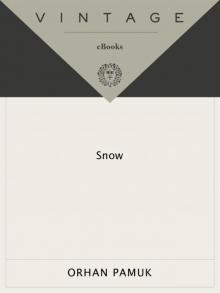 Snow
Snow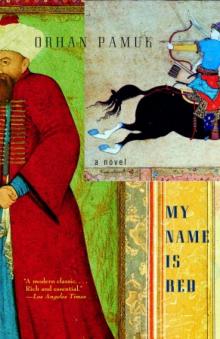 My Name is Red
My Name is Red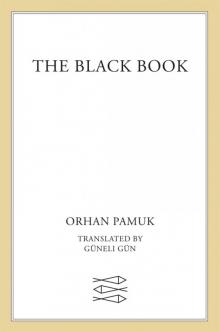 The Black Book
The Black Book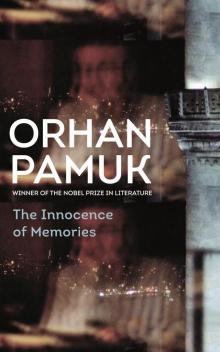 The Innocence of Memories
The Innocence of Memories The White Castle
The White Castle Other Colors
Other Colors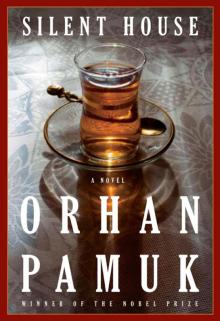 Silent House
Silent House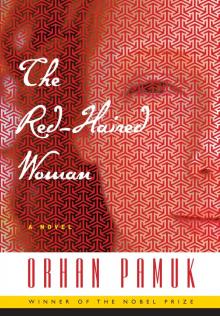 The Red-Haired Woman
The Red-Haired Woman The Museum of Innocence
The Museum of Innocence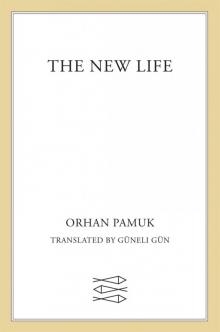 The New Life
The New Life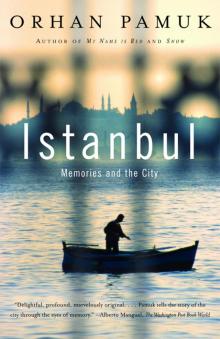 Istanbul
Istanbul